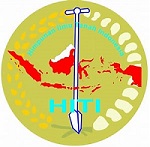KAJIAN SIFAT KIMIA TANAH PADA LAHAN BERLERENG TANAMAN CENGKEH (Syzygium aromaticum L) DI SALURANG KECAMATAN TABUKAN SELATAN TENGAH
DOI:
https://doi.org/10.35791/se.21.3.2021.36687Keywords:
Clove, Cengkeh soil chemical properties, Sifat kimia tanah.Abstract
STUDY ON SOIL CHEMICAL PROPERTIES ON SLOPING LAND OF CLOVE PLANTS (Syzygium aromaticum L.) IN SALURANG TABUKAN SELATAN TENGAH
The aims of this study were: to determine soil pH, organic-C , nitrogen, phosphorus and potassium in clove plantations in Kampung Salurang, Tabukan Selatan Tengah. This research was conducted using a descriptive method as follows: disturbed soil samples were taken on a different position sloping area, namely upper slope (LA), middle slope (LT) and lower slope (LB). Each of them consists of 3 composite soil samples which taken from soil around clove plant. Parameters observed were soil chemical properties, namely soil pH, organic-C, total-N, available-P and available-K. The results showed that the characteristics of the chemical properties of soil namely pH was classified as neutral, organic-C was classified as low to moderate, total-N was classified as low, available-P was classified as moderate, and available-K was classified as very low.
Downloads
Published
How to Cite
Issue
Section
License
Authors who publish in this journal agree to the following terms:
Authors hold their copyright and grant this journal the privilege of first publication, with the work simultaneously licensed under a Creative Commons Attribution License that permits others to impart the work with an acknowledgment of the work's origin and initial publication by this journal.
Authors can enter into separate or additional contractual arrangements for the non-exclusive distribution of the journal's published version of the work (for example, post it to an institutional repository or publish it in a book), with an acknowledgment of its underlying publication in this journal.
Authors are permitted and encouraged to post their work online (for example, in institutional repositories or on their website) as it can lead to productive exchanges, as well as earlier and greater citation of the published work (See The Effect of Open Access).




